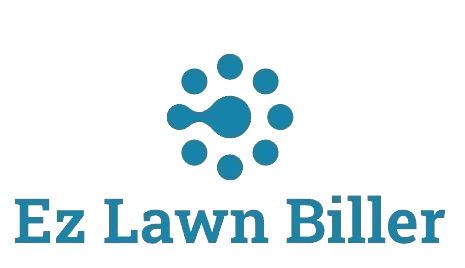Efficient scheduling is crucial for the success of your lawn care business. Discover expert tips to optimize your scheduling and boost productivity.
How to Manage Schedules in Your Lawn Care Business
Managing schedules in your lawn care business is not just about keeping track of appointments; it’s about maximizing your efficiency, improving customer satisfaction, and ultimately driving revenue. In this blog post, we will explore effective strategies to manage your schedules, tools that can help streamline the process, and best practices for maintaining a good work-life balance. Whether you are a solo operator or manage a larger team, these insights will empower you to optimize your scheduling and grow your business.
As the lawn care industry evolves, the importance of effective scheduling becomes increasingly apparent. Scheduling can impact your operational efficiency, employee productivity, and client satisfaction. With the right approach, you can ensure that your team is working efficiently while meeting customer expectations. In this article, we will cover essential aspects of scheduling, including the benefits of using specialized software, tips for optimizing your daily routes, and strategies for adapting to seasonal fluctuations. Let’s dive in!
Understanding the Importance of Effective Scheduling
Effective scheduling is key to the success of any service-based business, especially in the lawn care industry. A well-planned schedule ensures that you can allocate resources effectively, minimize downtime, and maximize your workforce’s potential. According to industry statistics, companies that invest in scheduling software report a 20% increase in productivity.
One significant advantage of proper scheduling is improved customer satisfaction. By effectively managing your appointments and service times, you can reduce waiting times and ensure that your customers receive timely service. This not only helps build trust with your clients but also encourages repeat business and referrals.
Moreover, when you incorporate tools like [Lawn Biller Software](https://ezlawnbiller.com/), you can automate many aspects of scheduling, allowing you to focus more on delivering exceptional lawn care services. This software can help you track appointments, manage client information, and even automate billing, making your scheduling process seamless.
Choosing the Right Lawn Service Software
Selecting the appropriate lawn service software is crucial for optimizing your scheduling process. The right software should not only allow you to manage appointments but also offer features that enhance your overall business operations. For instance, EZ Lawn Biller offers a user-friendly interface that enables you to track client details, log services, and manage invoices all in one place.
When evaluating scheduling software, consider features such as automated reminders for both clients and employees, customizable scheduling options, and route optimization capabilities. Efficient route planning can significantly reduce travel time, helping your team complete more jobs in a day, which is essential during busy seasons.
In addition, look for software that integrates with other tools you may already use. For example, a lawn service app that syncs with your accounting software can help streamline your entire business operations. This integration can save time and reduce errors, ultimately leading to a more efficient scheduling process.
Optimizing Daily Routes for Maximum Efficiency
One of the most effective ways to manage schedules in your lawn care business is by optimizing daily routes. Poor route planning can lead to wasted time and fuel, affecting both your bottom line and your service quality. Here are some strategies to enhance route efficiency:
1. **Group Jobs by Location**: Whenever possible, cluster jobs that are close together. This minimizes travel time and allows you to maximize the number of jobs completed in a single day. Use your scheduling software to identify clusters of clients for more efficient planning.
2. **Utilize Real-Time Traffic Data**: Leverage technology to gain insights into traffic conditions. By using apps that provide real-time traffic updates, you can adjust your route accordingly, avoiding congested areas and ensuring timely arrivals.
3. **Plan for Seasonal Changes**: As the seasons change, so do your scheduling needs. For instance, spring and summer may be busier times for lawn care, while fall may require different services like leaf removal. Adjust your schedules accordingly to account for these fluctuations and maximize productivity throughout the year.
Developing a Flexible Schedule
In the lawn care business, flexibility is essential. Weather conditions, client preferences, and seasonal demand can all influence your scheduling. To maintain an effective schedule, consider the following:
1. **Implement a Buffer Period**: Always include buffer periods between appointments. This allows for unexpected delays, whether due to weather or longer job times. A buffer can help you prevent backlogs and keep your clients happy.
2. **Communicate with Clients**: Keeping an open line of communication with your clients can help you understand their needs and preferences. This includes notifying them about any delays or changes in schedule due to unforeseen circumstances. Clients appreciate transparency and are more likely to remain loyal to your business.
3. **Use Technology for Adaptability**: Incorporate tools like [Lawn Biller Software](https://ezlawnbiller.com/) that allow for easy adjustments to schedules. If a last-minute job comes up or if a client needs to reschedule, having a software solution that enables quick changes can help you adapt seamlessly.
Best Practices for Client Communication
Effective communication with clients is a vital component of managing schedules in your lawn care business. Here are some best practices to enhance your communication strategy:
1. **Automated Notifications**: Utilize your lawn service software to send automated reminders to clients about their upcoming appointments. This not only keeps them informed but also reduces no-shows, which can disrupt your carefully planned schedule.
2. **Feedback Mechanism**: Encourage clients to provide feedback on your services. This can be done through follow-up surveys or direct communication. Understanding their experience can help you adjust your scheduling to meet their needs better.
3. **Personal Touch**: While technology is essential, don’t forget the importance of personal communication. A quick phone call or personalized email can foster a strong client relationship, helping clients feel valued and appreciated.
Leveraging Seasonal Trends in Your Scheduling
Understanding seasonal trends in the lawn care industry can significantly influence your scheduling efforts. During peak seasons, you may need to increase staffing and adapt your services to meet higher demand. Here are some strategies to effectively leverage seasonal trends:
1. **Anticipate Demand**: Analyze historical data to predict peak times for lawn care services. In spring and summer, lawn mowing and maintenance services may see a surge in demand, while fall may require different services like aeration and overseeding. Adjust your schedules accordingly to accommodate these trends.
2. **Seasonal Promotions**: Use the busy seasons to run promotional offers that encourage new clients to sign up for services. This can help you build your client base during peak times, ensuring that your schedule remains full.
3. **Prepare for Off-Season**: Even during the off-peak seasons, it’s essential to maintain communication with your clients. Consider offering winter services or maintenance tips, which can keep your business engaged year-round and help fill your schedule during slower months.
Investing in Training and Development
Investing in your team’s training and development can lead to a more efficient scheduling process. When your staff is well-trained, they can adapt more quickly to changes in schedules and provide better service to clients. Here are some training areas to focus on:
1. **Time Management Skills**: Provide training on effective time management techniques. This can empower your employees to complete jobs within the scheduled time, minimizing delays and improving overall efficiency.
2. **Customer Service Training**: Excellent customer service is crucial for maintaining positive client relationships. Equip your team with the skills to communicate effectively and address client concerns promptly, which can also reduce scheduling conflicts.
3. **Technical Training**: Ensure your team is familiar with the lawn service software you implement. Training on tools like [Lawn Biller Software](https://ezlawnbiller.com/) can help your staff leverage technology to improve scheduling and service delivery.
Conclusion
Managing schedules in your lawn care business is a multifaceted process that requires careful planning, effective communication, and the right tools. By implementing best practices, leveraging technology, and understanding seasonal trends, you can optimize your scheduling process, enhance client satisfaction, and ultimately drive business growth.
As you consider how to improve your scheduling practices, remember the importance of flexibility and adaptability. The lawn care industry is dynamic, and being able to adjust your schedules in response to changing conditions can set you apart from the competition.
Now is the time to take action! Explore the features of [Lawn Biller Software](https://ezlawnbiller.com/) to streamline your scheduling and transform your lawn care business. Don’t wait—start optimizing your scheduling today!




